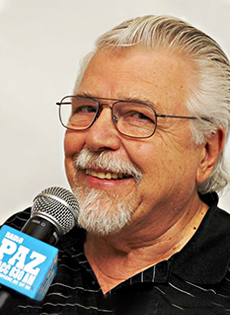
Interesting facts about Christmas
Monday, December 20, 2021
Victor Martell
CHRISTMAS CARDS
They were developed by Sir Henry Cole in 1843. This Englishman commissioned a painter friend to draw him a Christmas scene. He then had it reproduced by a printer, wrote a few brief wishes of happiness on it, and sent it to his friends and family.
THE NATIVITY SCENE OR CRÈCHE
The tradition of setting up the Nativity scene dates back to the year 1223. During a Christmas in the Italian village of Greccio, St. Francis of Assisi gathered the residents of the town to celebrate midnight Mass. Praises to the mystery of the birth were sung around a small Child Jesus, molded by the hands of St. Francis. At the most solemn moment of the Mass, that motionless figure of the child came to life, smiled and stretched out its little arms towards the Saint of Assisi. The miracle had taken place before everyone's eyes. Since then, the popularity of Nativity scenes, crèches or mangers spread all over the world and more figurines and decorations were added.
THE DECORATED CHRISTMAS TREE
It is believed to have appeared in Germany at the beginning of the 17th century, when in 1605 a tree was decorated to set the mood for the chill of Christmas. This custom quickly spread throughout the world. The Christmas tree arrived in Finland in 1800, and from there it spread to all the Nordic countries. It arrived in England in 1829, and it was Prince Albert, husband of Queen Victoria, who ordered that Windsor Castle be decorated with a Christmas tree in 1841. In Sweden, they keep the lighted and decorated tree up to 20 days after Christmas.
THE CHRISTMAS CAROLS
They are songs sung at Christmas to celebrate the birth of the Child Jesus. This custom has its origins in the Middle Ages and is kept in memory of the many prophets who announced the birth of the Savior. The townspeople, or villagers, were the ones who adopted the ancient hymns and songs in Latin with which the Church remembered the coming of Jesus, transforming them into sweet songs, which today are known by the name of Christmas carols. It is believed that the first carols originated in England, at the time of Henry I; the songs were in Latin and entertained at court festivities. The "Boar's Head Carol" was known as the song of the villager, and by the use of a diminutive became "carol" and used to designate the beautiful melodies that we hear throughout the month of December.
MISA DE GALLO (THE ROOSTER'S MASS)
The Mass celebrated in December for Christmas used to take place "ad galli cantus" — at the crowing of the rooster — from which it got its suggestive name, which has nothing to do with the fact that in some countries it is customary to eat roasted chicken at dinner on Christmas Eve. The custom of celebrating the Midnight Mass comes from the rites at the temples of Jerusalem. There, Catholics celebrate three Masses on the day of the birth of Jesus: one at night in the cave of the Nativity to celebrate the birth of Jesus; another at dawn, as a sign of Resurrection; and a third in the temple, this being the solemn office of the day.
CHRISTMAS DAY
It was officially recognized by the Catholic Church in the year AD 345 when December 25 was proclaimed as the date of the Birth of Jesus, following the influence of St. John Chrysostom and St. Gregory of Nazianzus.
THE CHRISTMAS EVE TURKEY
According to chronicles, it originated in Mexico in the 16th century. Hernán Cortés tried it from the Aztec Indians of Mexico, and he liked it so much that he brought it back to Spain. Nowadays, pork is used in many ways on this day in many countries of the Americas.
SANTA CLAUS OR ST. NICHOLAS
Around the second century, a Christian missionary priest named Nicholas left Italy to spread the word of God in Asia. He died on December 6, and is remembered for his great kindness and his great love for children. Several years later, he was proclaimed Saint Nicholas of Bari, where he was bishop, and inspired the figure of Santa Claus or St. Nicholas, as he is known in many places.
The figure of Santa Claus, as we know him today, was created in the United States in the 20th century, and is based on the life and legend of St. Nicholas. The name "Santa Claus" is a contraction of "Sanctus Nicolau" and refers specifically to St. Nicholas of Bari, whom we mentioned earlier. Currently, the same character called Santa Claus is referred to as Papá Noel, St. Nicholas, Father Christmas and many other names, depending on the different countries.
THE REMAINS OF THE WISE MEN
It is said that the remains of the Magi were kept for 300 years in the city of Istanbul, Turkey. Then they were moved to Milan, Italy, and later to Cologne, Germany. The remains of the three Wise Men rest in a gold and silver chest weighing about 350 kg (772 lbs.), and are in a chapel built for this purpose by Emperor Charlemagne in Cologne.
THE CHRISTMAS STAR
It is originally from the Philippines, where torches in the shape of a five-pointed star are made with flowers, which illuminate the entrance of houses. We usually place them at the top of the Christmas tree.
SILENT NIGHT
This is perhaps the most popular Christmas carol in the world, as it has been translated and sung in 330 languages. It is an Austrian Christmas song, created almost by chance, after a church organ had broken down.
In 1818, two days before Christmas, the old organ at St. Nicholas Church, the parish of Father Joseph Mohr, stopped working. In order not to disappoint his parishioners, the priest asked his friend Franz Xaver Gruber, teacher and organist from the neighboring village of Arnsdorf, to compose a melody for a Christmas text. At the Christmas Mass, Father Mohr, who had a tenor voice, played his guitar accompanied by his friend Gruber, who had a beautiful bass voice. Then, the two of them performed together for the first time in German the song that we know today as "Silent Night."
This fact, completely unusual at the time, became such a success, that the song spread to all the countries of the world. Its authors remained anonymous until their names were made known in 1867 by the imperial court of Prussia, as its creation was attributed to the famous musician Michael Haydn. "Silent Night," the carol by the Austrians Mohr and Gruber, was declared Intangible Cultural Heritage by UNESCO in 2011.
This blog originally appeared in Spanish as a column in the December 2021 edition of La Voz Católica.


Comments from readers